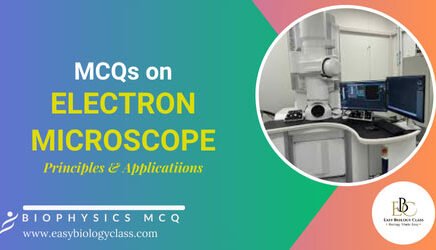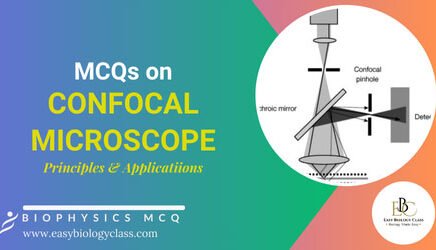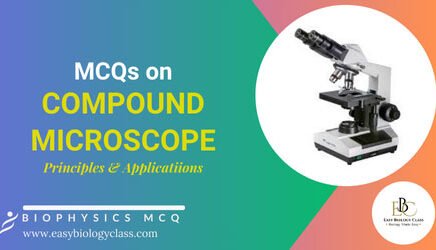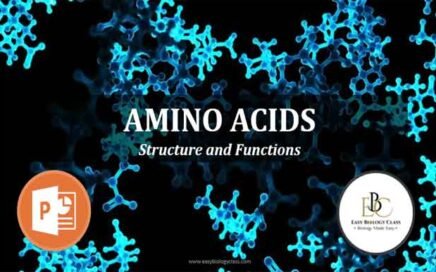
MCQ on Electron Microscope with Answers for Students and Exams
An electron microscope uses a beam of electrons instead of light to magnify specimens. It provides very high resolution, allowing scientists to see structures at […]

An electron microscope uses a beam of electrons instead of light to magnify specimens. It provides very high resolution, allowing scientists to see structures at […]

Dark field microscopy is a technique that enhances contrast by using a special condenser to block direct light. Only scattered light from the specimen enters […]

A confocal microscope is an advanced optical microscope that uses laser light to scan specimens point by point. It employs a pinhole aperture to block […]

A compound microscope is an optical instrument that uses two sets of lenses, the objective and the eyepiece, to magnify small specimens for detailed observation. […]

Structure of Proteins PPT: Proteins are complex biomolecules made up of amino acids linked by peptide bonds, and their structure is organized into four levels. […]

Amino acids are classified based on the properties of their R groups, which influence their behavior in proteins. The main categories include nonpolar (hydrophobic) amino […]

Structure of Amino Acids PPT: Amino acids are organic compounds that serve as the building blocks of proteins. Each amino acid has a central carbon […]

Chargaff Rule Questions: Chargaff’s rule, proposed by Erwin Chargaff in the 1950s, is a fundamental principle in molecular biology that describes the base composition of […]
Reverse Transcriptase PCR (RT-PCR) is a powerful molecular biology tool with extensive applications in research, diagnostics, and biotechnology. It is widely used for detecting and […]